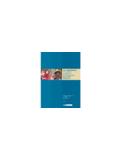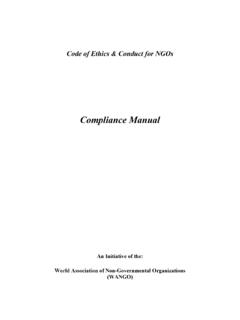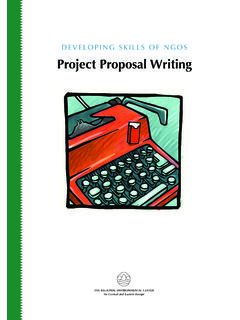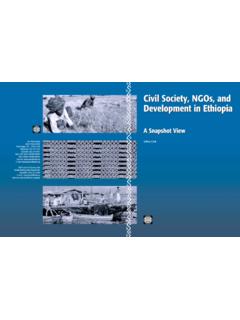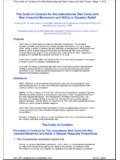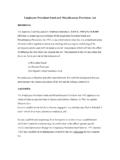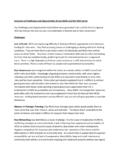Transcription of NGOs and UN Agencies Assisting Persons with …
1 ngos & UN Agencies Assisting Persons with disabilities A non-exhaustive reference list of organizations working with and for Persons with disabilities world-wide. Community Development, Gender Equality and Children Section, Division of International Protection, UNHCR Geneva ngos and UN Agencies Assisting Persons with disabilities A non-exhaustive reference list of organizations working with and for Persons with disabilities world wide Maria Isabel Eg ez Community Development, Gender Equality and Children Section Division of International Protection April 2008. Note This document has been produced by the Community Development, Gender Equality, and Children Section ( CDGECS ) , Division of International Protection, Office of the United Nations High Commissioner for Refugees. The information within has been researched and compiled by Maria Isabel Eg ez, CDGECS intern. Organizations' names, country presence, and activity information has been obtained from their respective public web-sites.
2 This information has been directly quoted and only modified for tense and continuity of language where needed. Quoted text in UK. English and English has remained unchanged. If this information is used or quoted elsewhere an acknowledgement should be made to the source of the information. Special thanks to the organizations who provided additional information on their operations. Photo Credits Pictures on front cover: Center UNHCR/B. Neeleman Left top UNHCR/J. Redfern Left bottom UNHCR/J. Redfern Right top UNHCR/A. Webster Right bottom UNHCR/S. Schulman Office of the United Nations High Commissioner for Refugees 94, Rue de Montbrillant 1202 Geneva Switzerland Web-site: ngos and UN Agencies Assisting Persons with disabilities 2. Table of Contents Section 1: Purpose .4. Introduction .4. Using this reference list ..5. Why partnership building? .6. Section 2: Africa ..7. Section 3: Middle East & North Africa ..42. Section 4: Asia and the Pacific ..51. Section 5: Europe . 70.
3 Section 6: The Americas ..86. ngos and UN Agencies Assisting Persons with disabilities 3. Purpose Introduction This reference list is a mapping of specialized organizations working with and for Persons with disabilities around the world. This reference list is intended to help UNHCR field staff identify specialized organizations that may be willing to support UNHCR by including Persons of concern with disabilities into their programs. It is important to expand our partnerships and search for these opportunities so that refugees, internally displaced Persons ( IDPs ) , returnees and stateless Persons have safe and equal access to services, education, livelihood opportunities, rehabilitation, and community support for the enjoyment and fulfillment of their Rights in accordance with the Convention on the Rights of Persons with disabilities . The reference lists presents a multitude of specialized organizations that has met our preferred criteria of being an internationally recognized organization with wide presence in the world or region where it operates such as Handicap International ( HI ) , Italian Association Amici di Raoul Follereau ( AIFO ) , Christian Blind Mission ( CBM ) and the World Health Organization Disability and Rehabilitation Team ( D AR ).
4 We have also mapped local ngos who have a partnership with larger regional or international organizations as well as a handful of exceptions of smaller independent organizations with a focus in a particular country or region that have unique programs such as those in the arts, person to person financial support for orthopedic interventions and rehabilitation , or training for professionals working with Persons with disabilities . Many organizations provide direct services, others focus on training, or awareness raising and advocacy. Some organizations cover all of these activities. For quick and simple browsing, the reference list has been divided into five regions: Africa, Middle East & North Africa, Asia & the Pacific, Europe, and the Americas. Each region is then alphabetically categorized by country. Simply go to your operation ' s region, locate your country ' s name and you will have found one or more specialized organizations. Even if your country has a variety of organizations listed, or if you only find one organization, please take a look at the end of each region ' s listing for a list of other organizations with an extensive presence in the region.
5 It is likely you will find your country listed among these organizations as well. ngos and UN Agencies Assisting Persons with disabilities 4. Throughout each listing, you can read a brief description of the population the organization serves and their activities. You will notice each organization mapped has a web-site link that takes you directly to their web-site or to another organization ' s web-site that houses their information. Simply type in or copy and paste the web-site link into your internet browser to access the organization ' s web-site for more information, including contact information. Keep in mind that this reference list is non-exhaustive, we encourage this be a starting point and that you expand your list of organizations presenting solid options for partnership and collaboration development in your country operation. Organizations have been mapped with a focus on: International presence and/or local ngos partnered with International organizations Organizations of Persons with disabilities also known as Disabled Persons ' Organizations ( DPOs ).
6 Long- term presence and/or significant impact where they are working The rights and needs of UNHCR Persons of concern with disabilities Diversity of disabilities : Physical, Sensory, Intellectual Using the reference list This reference list is intended primarily for UNHCR staff working in the field and implementing partners. In particular, Community Services staff can benefit from the use of this reference list in building a network of specialized organizations for their operations. Following are eight key steps to consider in using this reference list: 1. Locate your region and country; reference the other organizations with an extensive presence in the region list at the end of each region ' s section. 2. After reading the introductory information provided take a look at their web-sites. 3. Choose an organization ( or more ) on the list, or another organization you prefer not on the list working in the area of disabilities and establish contact with them. ngos and UN Agencies Assisting Persons with disabilities 5.
7 4. Get more information on their work, scope and impact and who is benefiting from their program ( s ) . 5. Discuss ways to collaborate, aiming for the inclusion of UNHCR Persons of concern with disabilities into their programs ( s ) . 6. Discuss with the organization how UNHCR can support their organization in terms of capacity building, information sharing and any other type of collaboration that can be establish with them. Ask the organization( s ) what is needed for Persons of concern to be integrated. At this point, see if it is possible to avail resources to support integration of Persons of concern. 7. Where possible, develop the same with government institutions that have services for Persons with disabilities , to take into account UNHCR Persons of concern with disabilities . 8. Please inform the Community Services Unit of the Community Development, Gender Equality and Children Section ( CDGECS ). at UNHCR HQ of any update on partnership building, so the Unit can highlight your initiatives in the next progress report towards the implementation of the Convention on the Rights of Persons with disabilities .
8 Your partnership building initiative and its impact on Persons of concern with disabilities and their communities could also be released as a web-story on the UNHCR web-site. Why partnership building? Many ngos and UN Agencies have extensive expertise in working with and for Persons with disabilities . They may be an organization dedicated to Persons with disabilities , or have a department or section dedicated to these children and adults. Using a partnership strategy we can benefit form their expertise and capacity. This should be our aim, as lack of staffing and budget constraints may delay or deter important projects from being developed and implemented for Persons with disabilities within UNHCR operations. There are already some organizations supporting Persons with disabilities in specific UNHCR operations such as Caritas, Save the Children Sweden, among a few others. Rather than setting up parallel structures we can link up with specialized organizations to improve the protection of girls, boys, women and men with disabilities .
9 ngos and UN Agencies Assisting Persons with disabilities 6. Africa Angola Benin Botswana Burkina Faso Burundi Cameroon Cape Verde Central African Republic Chad Republic of the Congo Democratic Republic of the Congo C te d'Ivoire Eritrea Ethiopia Gabon Ghana Guinea Guinea-Bissau Kenya Lesotho Liberia Madagascar Malawi Mali Mauritius Mozambique Namibia Niger Nigeria Rwanda Senegal Sierra Leone Somalia South Africa Sudan Tanzania Togo Uganda UNHCR/B. Press/ July 1999 Kenya/ Sudanese refugees/. Zambia class for deaf children using sign language/Kakuma camps. ngos and UN Agencies Assisting Persons with disabilities Zimbabwe 7. AFRICA. Country NGO/ Agency Web-site Population Activities Angola Association to Aid refugees and It has been said that about 15 million landmines are buried in Angola, a number that Refugees Japan . other Persons exceeds the Angolan population of million. These landmines pose a serious (AAR) with disabilities threat to the lives of the people in Angola.
10 In September 2004, AAR JAPAN began its anti-landmine project in the province of Lunda Sul that borders on the Democratic Republic of Congo. In this region far from the capital, few landmine projects are carried out. As a result, many people become victims of landmines. To protect people's lives from landmines and buried unexploded ordinances, AAR JAPAN has been engaged in Mine Risk Education. AAR JAPAN has also carried out interview surveys to identify the places where landmines are buried. The results of these surveys have been shared with MAG, a UK NGO engaged in landmine clearance in this region . Angola Christian Blind Persons with CBM supports the provision of more than 1000 programs in 113 countries in Africa, Mission en/tree/CBM_EV_E disabilities Asia/Pacific, Europe, and Latin America. Fields of work include medical services, International N_baumbart_1524 education, and rehabilitation for people with disabilities . Wherever possible, it is the (CBM) aim to provide these services within the communities.









